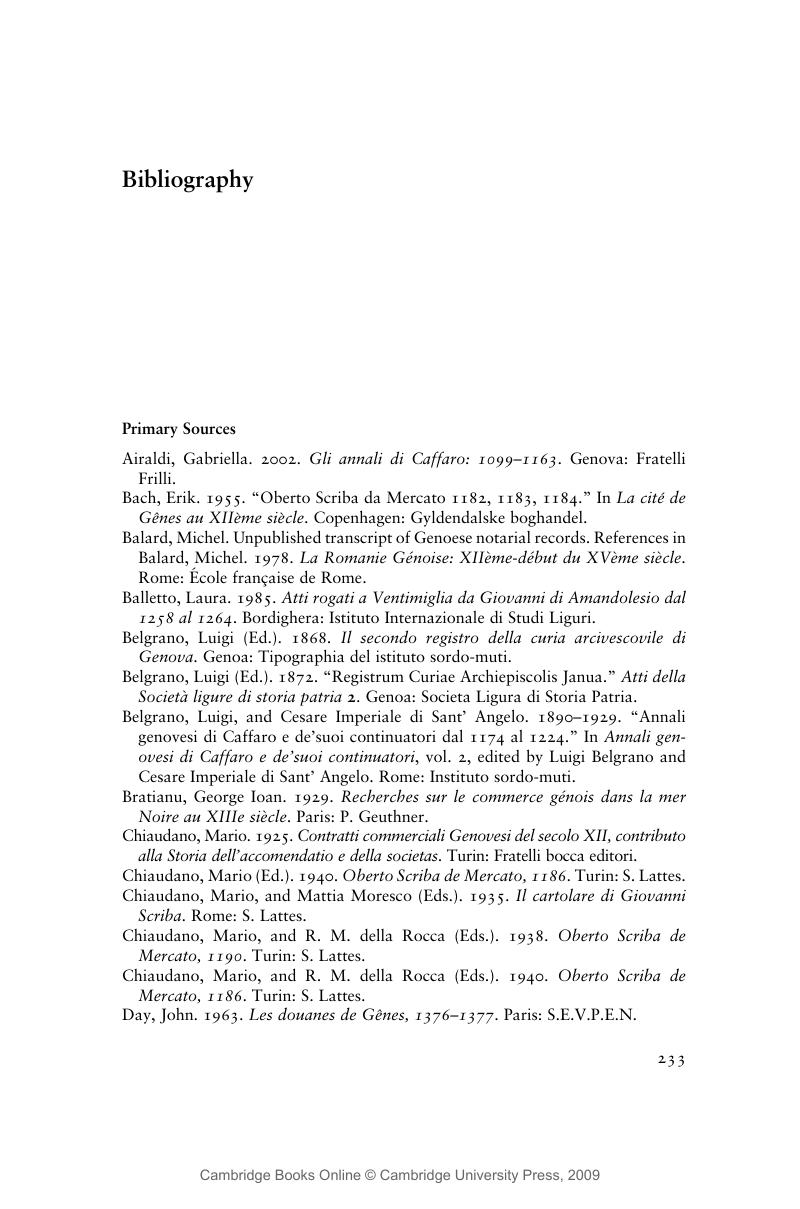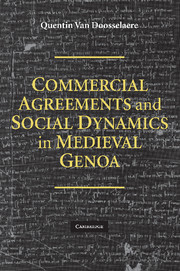Book contents
- Frontmatter
- Contents
- List of Figures
- List of Tables
- Abbreviations
- Acknowledgments
- 1 From Sword into Capital
- 2 Genoa at the Dawn of the Commercial Expansion
- 3 Equity Partnerships for Heterogeneous Ties
- 4 Credit Network for Routinized Merchants
- 5 Insurance Ties for Oligarchic Cohesion
- 6 Conclusion
- Appendix A Sample of Prices and Income
- Appendix B Sample of Long-Distance Trade Participants' Occupations
- Appendix C Commenda Network Graphs
- Appendix D Nodal Degree Distributions of Commenda Networks
- Appendix E List of Top Mercantile Nonaristocratic Families
- Appendix F Partner Selection Probability Model
- Bibliography
- Index
- References
Bibliography
Published online by Cambridge University Press: 31 August 2009
- Frontmatter
- Contents
- List of Figures
- List of Tables
- Abbreviations
- Acknowledgments
- 1 From Sword into Capital
- 2 Genoa at the Dawn of the Commercial Expansion
- 3 Equity Partnerships for Heterogeneous Ties
- 4 Credit Network for Routinized Merchants
- 5 Insurance Ties for Oligarchic Cohesion
- 6 Conclusion
- Appendix A Sample of Prices and Income
- Appendix B Sample of Long-Distance Trade Participants' Occupations
- Appendix C Commenda Network Graphs
- Appendix D Nodal Degree Distributions of Commenda Networks
- Appendix E List of Top Mercantile Nonaristocratic Families
- Appendix F Partner Selection Probability Model
- Bibliography
- Index
- References
Summary

- Type
- Chapter
- Information
- Commercial Agreements and Social Dynamics in Medieval Genoa , pp. 233 - 254Publisher: Cambridge University PressPrint publication year: 2009

